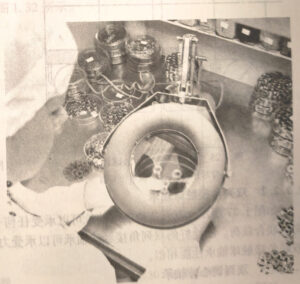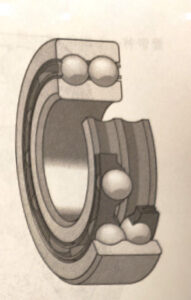1.2.1.3 Double row deep groove ball bearing
As shown in Fig. 1,21, this kind of bearing has stronger radial bearing capacity than single row deep groove ball bearing. The load distribution between columns is controlled by the geometric accuracy of the channel. In addition, this bearing has similar performance characteristics with single row deep groove ball bearing.
1.2.1.4 Instrument ball bearing
The standard metric bearing size range is; The inner diameter is from m005906 in) to 9mm (0.35433 in); The outer diameter ranges from 4mm (0.15748 in) to 26mm (1.023620 in). The dimension diagram of standard inch bearing is: inner diameter from 0.635mm (0.025 in) to 1900m (0.750 in); outer diameter from 2.54mm (0.100 in) to 41275mn (1.6250 in). In addition, the instrument ball bearing also includes ultra-thin series with an outer diameter of 47.625mm (1.8750 in) and thin-walled series with an outer diameter of 100mm (3.93701 in). According to ANSI standard, bearings with an outer diameter less than 9mm (0.3543in) are called miniature bearings, and the minimum diameter of the steel ball used is 0.635mm (0.0250in). These bearings are shown in Figure 1.3. The manufacturing standards of instrument ball bearings are stricter than those of various bearings mentioned previously, such as cleaning standards. This is because small impurities will significantly increase the bearing friction torque, which is not conducive to the smooth operation of the bearing. Therefore, such bearings shall be assembled in the super clean room as shown in Fig. 1.22.
The radius of curvature of the instrument ball bearing groove is generally not less than 57%. In order to prevent corrosion from affecting bearing performance, such bearings are usually made of stainless steel.








